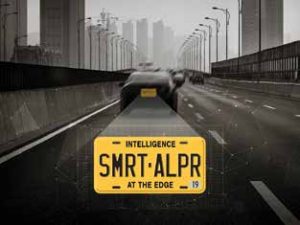The rapid integration of technology into law enforcement operations, combined with recent advancements in artificial intelligence (AI), suggests that AI will soon become integral to a wide range of policing technologies. AI is, in fact, already being explored in a range of policing efforts such as crime analysis, body camera video review, and DNA evaluation.1 Of course, discussions on AI in policing can trigger public concerns about the potential for issues like profiling, behavioral prediction, or bias; recent missteps have reasonably raised alarms.2
To be clear, AI-based technology should always be just one tool of several that the police will have at their disposal. There is a potential future where it could be integrated into a decision chain, but right now, AI is far from being ready to serve as a policing decision-maker. However, it is worth noting that, in the near future, criminals will certainly be using AI for nefarious purposes. To ensure a technologically level playing field—and preferably an advantage—the police do need to prepare to leverage AI to prevent and combat crime.
Effective, ethical policing—built on a foundation of public trust and legitimacy—is a key tenet expressed long ago by Sir Robert Peel (considered the “father of modern policing”) and espoused by current police leadership to this day.3 The police secure the public’s trust by demonstrating transparency and their dedication. In return, they receive the public’s cooperation in preventing crime and disorder. AI and related technologies can be powerful tools for enhancing that trust and legitimacy by increasing transparency on how the police respond to specific community concerns.
Given those concerns, police departments must move forward transparently with AI integration and align their strategy and operations with community input and collaboration. Police departments will also need a strategy that addresses the complexity and special skills required to modernize in today’s challenging police environment.
Using AI Helps Secure and Maintain Public Trust
Peel emphasized the importance of building public trust and legitimacy. All police organizations consider this a foundational component of ethical and effective policing.
Responsible police organizations will identify how AI can integrate with operations in the context of historical policing principles. The police rely on information from the public to prevent crime and enhance safety; agencies regularly engage with community leaders and organizations to discuss policing effectiveness. For instance, police may meet with community stakeholders to focus on a recent increase in property crime in a specific area. Applying sound tools and data, the police will work with those stakeholders to identify what type of resources to deploy and when that should be done. Police leadership can monitor, share progress on the deployment, and measure outcomes against the pre-deployment state.
AI can elevate this capability to the next level, ingesting, analyzing, and visualizing data to provide insights into multiple options for resource deployment. An AI-based system needs far fewer resources than manual analysis; it processes larger volumes of data in near real time and with increasingly more accurate outcomes. Imagine enabling community stakeholders to visualize several options for addressing the problem at hand; walking through the department’s decision-making process based on those predicted outcomes; and demonstrating how the response plan will be controlled, measured, and evaluated during deployment. Such a capability will greatly enhance the police department’s ability to address community concerns while promoting full transparency in a cooperative problem-solving process.
Data Enhances the Police-Public Partnership
Peel recognized that “the police are the public and the public are the police,” distinguished only in that the police are “paid to give full-time attention to duties which are incumbent on every citizen.” AI applies to this principle and can promote increased community involvement to reduce crime and enhance public safety.

It starts with data. Resource allocation and other police-collected data create a corpus that, if properly formatted, can be fed into an AI system, which can suggest options to optimize resources and present the data visually, such as through heat maps, hot spots, or service calls on a website. This kind of information will empower residents to verify police responses to incidents reported and help identify gaps in policing services for incidents or issues that may be unreported.
By collecting and analyzing police data and combining that information with additional input from the community at large, AI can guide the police department on where resources will be most needed now and in the future. Over time, the AI model will learn about trends in police actions and their associated outcomes, such as the effects of utilizing a particular patrol schedule. An AI system can then use those learned insights to predict different models for how applying resources to a specific area would impact crime in a subsequent period—for example, stationing officers at a particular location, changing a routine, staying longer in a certain place, or modifying a patrol route. Publicly sharing reporting data improves transparency, increases public cooperation and involvement, and clearly shows how the police-public partnership affects positive community outcomes.
AI Boosts Effectiveness in Lowering Crime
Peel argued that policing effectiveness is measured by the absence of crime and disorder, not the evidence of their response to it. In other words, more tickets and arrests do not equal more effective policing—reduced crime, low public perception of crime, and increased safety do. AI can support prevention efforts and help police make better decisions when an enforcement response becomes necessary.
Realistically, all police departments face resource constraints, so they must strive to optimize every asset they have. Logistical applications of AI can help ensure that police presence (whether patrol officers or other assets) is managed to optimize geographic coverage and community benefit. AI can analyze officers’ patrolling patterns, officer-initiated actions, citizen service calls, and crime and safety data to suggest adjustments to reduce crime and improve safety. Take traffic safety as an example—AI can help a police department identify traffic trends, crash patterns, and safety improvement options and identify whether actions are effective. AI-supported decision-making processes can provide a record of the police department’s efforts to improve safety and be effective stewards of public resources.
Improving Performance Increases Adherence to Law and Policy
Peel held that the police earn and maintain the public’s respect and trust through strict adherence to the law and established policies. This requires effective training programs to prepare officers for making difficult decisions in what are often rapidly evolving circumstances. AI can be used to support effective police training and continuous operational improvement.

Pre-programmed software solutions and live exercises are standard police training tools. While these tools are helpful, pre-programmed software quickly becomes stale. Live exercises are resource intensive and can be high risk. Alternatively, AI-enhanced augmented reality can recreate virtual scenes and produce a range of what-if incident scenarios, changing the training environment in real time in response to the trainee’s actions. For instance, the AI can present an individual demonstrating certain behaviors for the trainee to assess and respond to. AI may also be trained to analyze the officer’s response to these situations, support constructive feedback and training, and confirm progress. AI-supported training will also be less human resource intensive, allowing more frequent engagement without increasing injury risk.
Additionally, AI-enabled learning scenarios are not limited to threat response, but could support interview, interrogation, and crime evidence collection training as well. By stretching beyond standard training parameters, AI can better prepare employees for a breadth of situations that better mimic the unpredictable nature of policing.
Addressing Human and AI Bias Helps Ensure Impartial Service
Peel explained that the police must exercise their authority impartially and avoid the perception that their actions favor or punish one group over another. Recent focus on bias in policing has brought the need for police impartiality to the forefront of policy debates. AI as a tool can help bring objectivity and efficiency to police decision-making. However, it is essential to remember that AI relies on data provided or influenced by humans, so it cannot be assumed to be free from biases or mistakes. It is critical that AI algorithms and the information AI provides are subject to scrutiny before any police action is taken.
 Consider an example of a license plate reader (LPR), a commonly used data collection and enforcement technology to support enforcement decision-making processes. Imagine an officer is alerted to a stolen vehicle by an LPR and, without further investigation, stops and arrests all of the vehicle’s occupants. The officer then reviews the alert and finds that, while the plate number is correct, the issuing state is wrong—the car is not, in fact, stolen.
Consider an example of a license plate reader (LPR), a commonly used data collection and enforcement technology to support enforcement decision-making processes. Imagine an officer is alerted to a stolen vehicle by an LPR and, without further investigation, stops and arrests all of the vehicle’s occupants. The officer then reviews the alert and finds that, while the plate number is correct, the issuing state is wrong—the car is not, in fact, stolen.
The reaction of any responsible police officer reviewing this scenario is, “Of course, you have to confirm.” Handling AI inputs to decision-making processes is no different. Discretion and caution are still required; a well-trained and reasonable human evaluator must always be the final decision-maker. Failing to adhere to this basic standard not just reflects poorly on the involved police department but also erodes community trust in police around the world.
Tapping Existing Talent Can Achieve AI-Enriched Outcomes
AI clearly offers unprecedented new capabilities to support public safety and effective law enforcement. Identifying new capabilities aligned with ethical policing principles is the easy part. In addition to the significant resource constraints in policing today, police departments will also need to grapple with how to implement new AI solutions and other advanced policing technologies, often without skilled specialists on staff.
Additionally, the value of any AI-based system is rooted in the data it has to work with. As a given system gets trained or tuned for police applications, improving the quality of the data fed into it will produce better outcomes. Technological implementation or integration failures may decrease public approval or political support for AI adoption and other department initiatives. Police leaders must prepare their organizations to capture the opportunities AI and other advanced technologies can deliver.
Successful technology modernization requires a project-based approach that delivers new operational ways of working. Tech-based projects are notoriously difficult to execute successfully, and most fail to deliver their intended value.4 The largest U.S. law enforcement agencies, like the New York City Police Department and Los Angeles, California, Police Department, have dedicated modernization teams staffed with subject matter experts whose full-time purpose is to deliver complex new programs and solutions. Realistically, replicating that model is feasible for only a limited number of police departments.
public support is a key performance indicator of any policing initiative
Instead, police chiefs must leverage their available strengths, especially those unique to their size and internal environment. As increasingly complex AI capabilities become available, each “tier” will require different levels of resource investment and data streams with specific formats. A project management–based approach should define data governance early on and establish a roadmap, including appropriate verification gates and milestones to ensure the needed outcomes, buy-in, and return on investment.
This approach requires several deliberate steps. The first is to begin with seeking out and discovering the department’s interdisciplinarians—those who can and are interested in solving new problems by combining knowledge, skills, and abilities from two or more topical areas. A good example is a patrol officer who builds computers as a hobby or has other IT interests and training. These team members can form the coalition needed to execute complex projects. Many may also prove to be leaders in the quest to adopt new and innovative technologies. The department’s newest members may be familiar with using large language model (LLM) AI technology, like ChatGPT, otter.ai, and others. These tools can support the technical execution of the department’s modernization projects, such as developing implementation plans, recording detailed notes, and identifying project-related risks. While these tools can support the technical components of modernization efforts, effective execution also depends on leadership, teamwork, and communication.
The next step is to enhance the organization’s project management competency through formal training. Professional project managers use leadership, technical and business skills to realize benefits and deliver value through new initiatives. Formal project management training for a department’s members will enhance the organization’s effective implementation of its modernization strategy. Remember that public support is a key performance indicator of any policing initiative; simply implementing a new solution is not enough. Formally training modernization leaders in project management will ensure they recognize the public as a critical project stakeholder and take steps to advance a positive community-police relationship and perception of the department’s new way of working. Offering project management training also provides department members with a new career development path, creating an opportunity to lead change and be responsible for complex initiatives that will deliver real value for their organization and community. Consider the department’s interdisciplinarians during the selection process—only a few individuals formally trained in project management are needed to significantly impact the department’s modernization efforts.
The final step is to select project-proficient service partners with AI expertise who can support the implementation and integration of new technologies through a tailored delivery approach. These service providers must have the skills and competency to partner with the department’s implementation team to support integration, training, adoption, and benefits realization. Good service partners will also understand the importance of the police-public relationship and know that project success will reflect well on the department’s broader modernization efforts.
Responsibly Adopting AI Is the Way Forward
The possible improvements to public safety presented by advancements in AI and other technology are nearly limitless. Understanding what AI can do is critical, but police organizations and the communities they serve must also identify what AI should be used to do. AI-based policing technology must always be just one tool of several used to enhance public safety—and deploying AI that is both trustworthy and reliable requires significant planning and preparation.
Leveraging AI in an historically informed way, such as one guided by Peel’s policing principles, helps ensure new technology aligns with long-standing policing norms. At this early stage, police departments need to formulate a strategy to prepare for modernization projects required to integrate AI and other new technologies into their operations. Implementing a strategy that promotes a police department’s project management proficiency will enhance technology implementation and integration, leading to improved service delivery and increased community support for the department’s modernization efforts. With exciting opportunities ahead, the time to get started is now. d
Notes:
1Christopher Rigano, “Using Artificial Intelligence to Address Criminal Justice Needs,” October 8, 2018; Taylor Jung, “New AI Program Will Monitor Body-Camera Footage in Paterson,” NJ Spotlight News, October 12, 2023; Karen Richmond, “AI Could Revolutionise DNA Evidence – But Right Now We Can’t Trust the Machines,” The Conversation, January 29, 2020.
2Pranshu Verma, “The Never-Ending Quest to Predict Crime Using AI,” Washington Post, July 15, 2022; Eyal Press, “Does A.I. Lead Police To Ignore Contradictory Evidence?” New Yorker, November 13, 2023.
3UK Home Office, “Definition of Policing by Consent,” FOI release, December 10, 2012; John Letteney, “The Year Ahead: 2022–2023,” President’s Message, Police Chief 89, no. 11 (November 2022): 6–8.
4Steve Andriole, “Why No One Can Manage Projects, Especially Technology Projects,” Forbes, December 1, 2020.
Please cite as
Michael Jenkins and Chris Shields, “Taking a Principled Approach to AI in Policing,” Police Chief Online, April 10, 2024.



